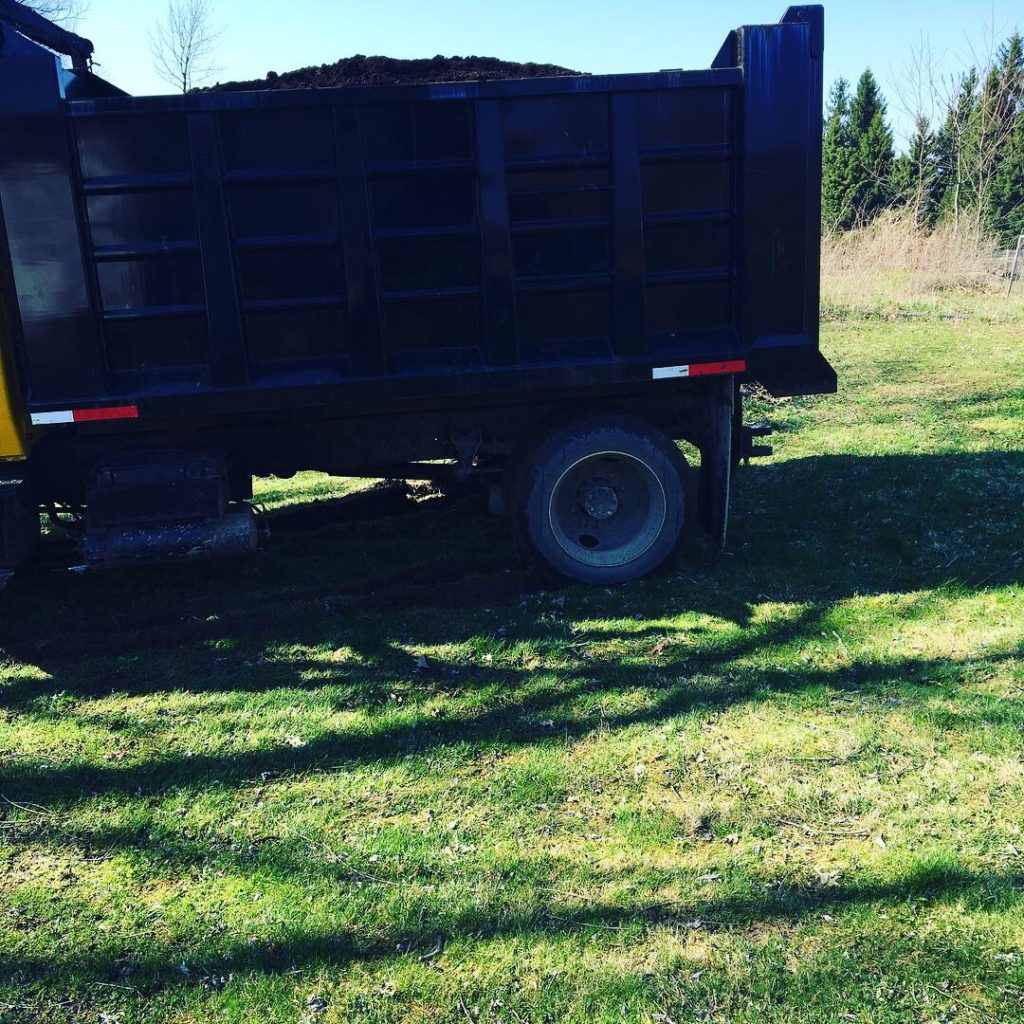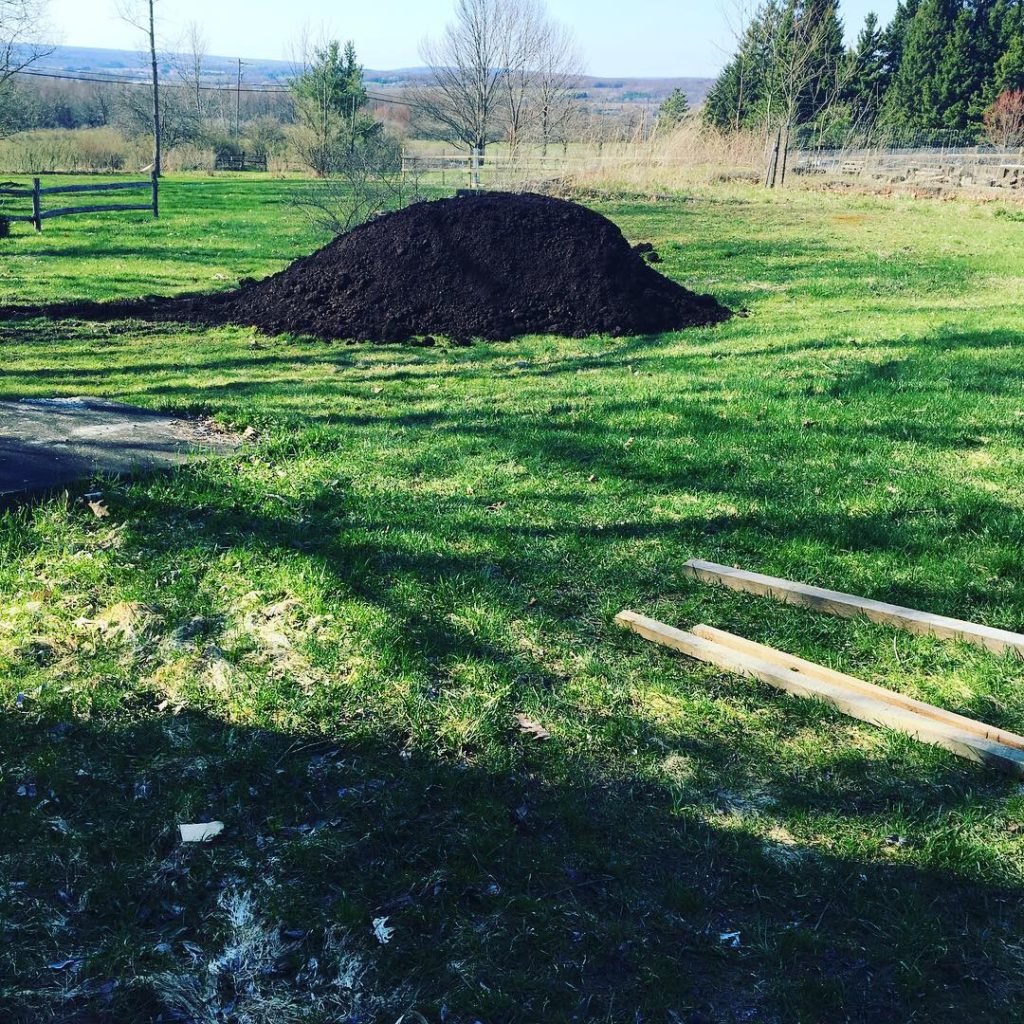How to Buy Compost
When we decided to create a vegetable garden large enough to sustain our family all summer with enough extra produce to freeze and can for winter, we did a lot of research before settling on Charles Dowding’s famous no-dig method. It seemed like the easiest and most likely path to success for people who had previously only tended a single 4’x8′ raised garden bed. Plus, we knew our soil was less than ideal, meaning we’d have to amend it no matter what approach we chose, so since we knew we’d be placing a large order for compost anyway, we figured we might as well save ourselves the extra work of digging out the beds into the bargain.
The first step in buying compost is to determine how much you need for whatever size garden you are planning. In the US, compost is sold in cubic yards. To determine how many cubic yards to buy, use this formula provided by Cornell University. (Note: If you do a web search for “compost calculator” you can also find tons of sites selling compost that have a calculator that will do this math for you, but I urge you to verify the amount on a couple different sites as we found at least one website with a calculator that was WAY off.)
For the purposes of our 2019 garden, we calculated our compost needs as follows:
Beds sized 8’x4′
The area of an 8’x4′ bed = 32′
32′ x 12 beds = 384′ total area
384 (feet area) x 6 (inches compost) x 0.0031 = 7.14 cubic yards compost needed
Beds sized 16’x4′
The area of a 16’x4′ bed = 64′
64′ x 2 beds = 128′ total area
128 (feet area) x 6 (inches compost) x 0.0031 = 2.38 cubic yards compost needed
Finally, we added the volume of our two different sized beds together:
7.14 + 2.38 = 9.52 total cubic yards


As far as we can discern, manure-based and vegetable-based compost work equally well in a vegetable garden, so the determination of which to buy should be based on any personal preference, availability, and cost. Avoid compost that is mixed with a lot of wood mulch as it can create hiding places for garden pests. I requested a quote for manure compost from an OMRI listed farm about 20 miles from my house and received a quote of $32/cubic yard. I also requested a quote from a company closer to the nearest city that collects kitchen scraps from local restaurants and turns them into compost. They offer a manure blend compost for $42/cubic yard and vegetable scrap compost for $52/cubic yard. In addition to the higher price, I couldn’t find any information on whether that company was OMRI listed (I got the impression they were very new) and we were able to score free delivery from the farm, so it was a no-brainer for us.
I confess that, having never worked with manure compost before, I was a little nervous. Would it smell bad? Would it consist of huge, disgusting cow patties? My research told me no, but nevertheless I was crossing all my fingers and toes in the hope that we hadn’t made a terrible decision. And you know what? It’s totally fine. No smell at all, it just seems like a very rich dirt. The only time I’ve noticed a difference is when I get my garden gloves wet while handling it and it kind of bleeds through the cloth and stains my hands a little, which regular dirt doesn’t really do. This is a little gross, but not the end of the world and I know it’s teeming with beneficial nutrients that will help my vegetables grow vigorously, so I scrub extra well with soap when I’m done and don’t think too much about it. Non-porous gloves would also solve that problem.
Another type of compost that I have seen mentioned in gardening blogs is spent mushroom compost, made from the waste generated by mushroom production. Because it seems like more of a niche product and I wouldn’t even know where to find it in bulk, I didn’t do a ton of research, but my understanding is that it is high in beneficial nutrients but can be quite alkaline, which may not provide the right environment for acid-loving plants like blueberries and cucumbers. If you want to use this, make sure you know the pH of your soil and what your plants need to thrive.
I hope other home gardeners and potential homesteaders find this information helpful. We also built our own compost bins back in March and are working toward having a steady, ongoing supply of our own organic, vegetable-based compost. I will write more about that in a separate post as well as provide updates on our experience with manure compost as the growing season progresses.


You May Also Like

Welcome to Farmhouse on the Pond
March 10, 2020
Oatmeal Brûlée with Cinnamon Apples and Walnuts
July 31, 2018